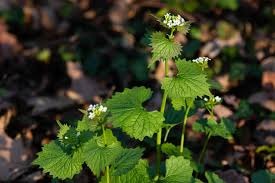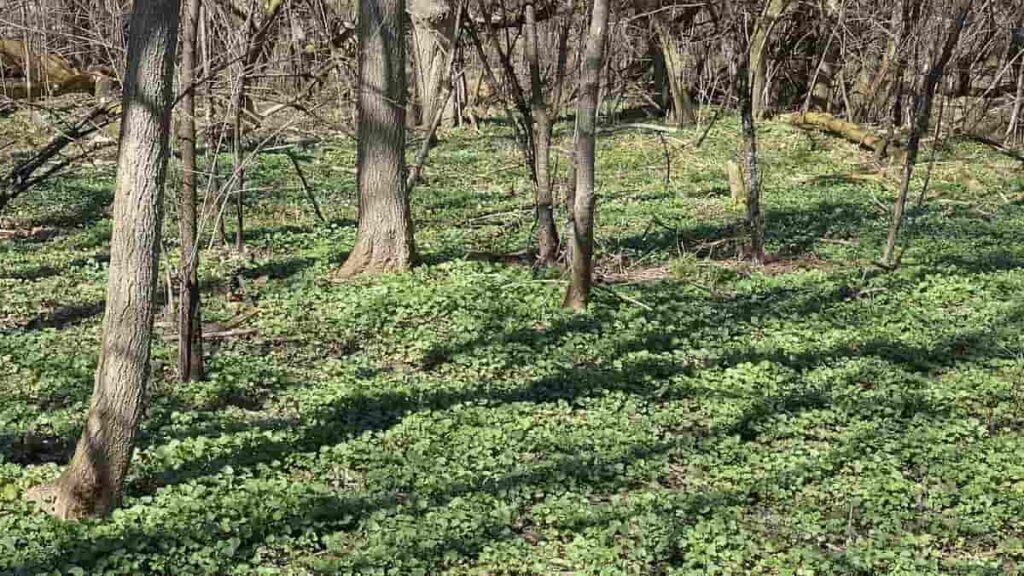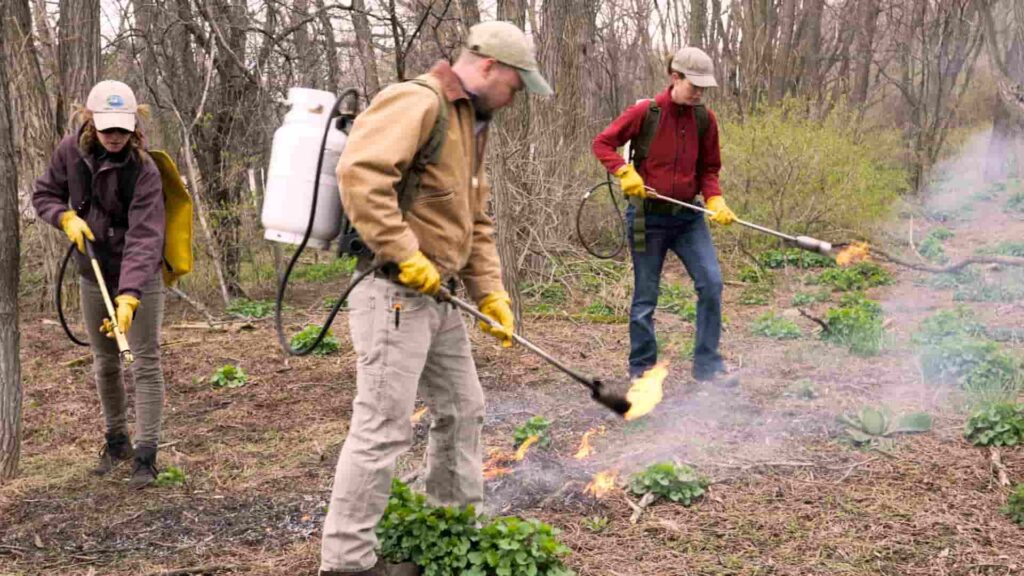How Did Garlic Mustard Get To The Taiga Biome – A Complete Guide!
I saw garlic mustard while hiking in the taiga biome. At first, I didn’t realize it wasn’t supposed to be there. Later, I found out it spread because people brought it, and it can grow in cold places.
Garlic mustard came to the taiga biome when European settlers brought it to North America in the 1800s. It spreads because it can grow in cold, shady areas. Now, it competes with local plants in the taiga.
Stay tuned with us as we talk about how garlic mustard got to the taiga biome. We’ll share how this plant traveled from Europe and grew in new places. Don’t miss the full story.
What Is Garlic Mustard? – You Should Know !
Garlic mustard is a plant species native to Europe but has become invasive in North America. It is known for its strong garlic-like smell and taste, especially in its leaves and roots.
Garlic mustard grows in forests, along roadsides, and in gardens, and it can quickly spread, outcompeting native plants. It is considered invasive because it disrupts local ecosystems by taking over habitats that native plants rely on.
Characteristics:
- Identification: Garlic mustard has distinctive triangular, heart-shaped leaves with toothed edges. In its first year, it forms a rosette of rounder leaves close to the ground, while in its second year, it grows taller with more elongated leaves and produces small white flowers with four petals.
- Height: Typically grows between 2 to 4 feet tall.
- Scent: The plant emits a strong garlic odor when its leaves are crushed, which is how it gets its name
How Did Garlic Mustard Get To The Taiga Biome?
Garlic mustard was brought to North America by European settlers in the 1800s. They brought the plant because they believed it had medicinal benefits and could be used as food.
The settlers used it to treat different health problems and enjoyed adding it to their meals.
Over time, garlic mustard spread beyond the places where it was first planted. It grew well in North America’s forests and fields because it could adapt to many different types of soil and weather.
Unfortunately, the plant became invasive, meaning it grew too quickly and crowded out native plants. Today, garlic mustard can be found all over the United States, where it harms the local plants and wildlife.
Must Check: MaintainX 50M Series 1B 191MRoofBloomberg – Boosts Valuation to $191M!
What Makes The Taiga Biome Suitable For Garlic Mustard?

The taiga biome, with its cold climates and coniferous forests, provides certain conditions that make it ideal for garlic mustard.
- The dense tree cover allows garlic mustard to establish itself in shaded areas.
- The cool temperatures and moist soil create a favorable environment for its growth.
- Garlic mustard’s ability to tolerate low light levels helps it thrive in the undergrowth of the taiga.
- Its adaptability to various soil types contributes to its success in this biome.
- Additionally, the minimal competition from native species in some parts of the taiga allows garlic mustard to spread easily.
Why Is Garlic Mustard Bad? – Harmful Effects!
Garlic mustard is bad for the environment because it spreads quickly and takes over places where native plants should grow. It starts growing early in the spring and blocks sunlight, taking away water and nutrients from other plants.
It also releases chemicals from its roots that stop other plants from growing, making the area less diverse. Garlic mustard affects the underground fungi that help plants get nutrients, which harms trees and other plants. When garlic mustard takes over, it also reduces food for animals, causing problems in the food chain.
Have You Explored? ice blue and black flower bouquet comacity map imvu – Transform Your IMVU Space!
How Does Garlic Mustard Affect The Ecosystem?

Garlic mustard affects the ecosystem by taking over spaces where native plants should grow. It spreads quickly and blocks sunlight from reaching other plants, making it hard for them to survive.
The plant also changes the soil by releasing chemicals that stop native plants from growing. This can harm animals and insects that depend on native plants for food. Overall, garlic mustard weakens the balance of the ecosystem by crowding out important plants and disrupting the food chain.
What Makes The Taiga Biome A Good Place For Garlic Mustard To Grow?
The taiga biome is a good place for garlic mustard to grow because of a few things. First, the forest floor in the taiga is shaded, which garlic mustard likes. It grows well in places with less sunlight. The soil in the taiga is often wet, which gives the plant the water it needs to grow.
Garlic mustard also starts growing early in the spring, before other plants, giving it a head start. The plant can grow in many types of soil, so it spreads easily in the taiga. These conditions help garlic mustard grow well in the taiga.
Do You Know? 6608101372 filtro de aire geely – Boost Engine Performance Today!
How to Identify Garlic Mustard get to the taiga biome?
Here’s how to identify garlic mustard get to the taiga biome:
- First-Year Leaves: In its first year, garlic mustard has rounded, heart-shaped leaves that grow close to the ground. The edges of the leaves are jagged.
- Second-Year Leaves: In the second year, the plant grows taller with triangular leaves that also have jagged edges. The leaves grow along the stem.
- Flowers: In spring, garlic mustard has small white flowers with four petals that form clusters at the top of the plant.
- Smell: If you crush the leaves or stem, they will smell like garlic.
- Height: Garlic mustard can grow up to 3 feet tall in its second year and has flowers at the top of the stem.
These features can help you spot garlic mustard as it grows in the shaded, damp areas of the taiga biome. If you find it, try to remove it to help protect the other plants.
What Management Strategies Are Being Implemented To Control Garlic Mustard?
Pulling by Hand:
Pulling garlic mustard by hand is a common method for small areas. It’s important to remove the entire plant, including its roots, before it starts making seeds. After pulling, the plants should be bagged and thrown away—never composted—to prevent seeds from spreading. This is an effective way to control small infestations.
Cutting and Mowing:
Cutting or mowing garlic mustard before it flowers helps stop it from producing seeds. Regular mowing or cutting prevents new plants from growing. This method works well in larger areas like parks or fields where machines can be used to manage the problem.
Using Herbicides:
In larger areas, herbicides may be used to control garlic mustard. Care must be taken to ensure that nearby native plants are not harmed. Spot treatments with low-toxicity herbicides can effectively reduce garlic mustard without affecting other species. Using herbicides in combination with other methods can provide better results.
Controlled Burns:
Controlled burning can help reduce garlic mustard by killing its seeds and preventing regrowth. This method must be carefully planned and monitored to avoid damaging other plants and ecosystems. Burns are done in small, manageable areas during early summer when garlic mustard is most vulnerable.
Must Check: safco ins. claim number 056574090-01 – Steps to Resolve Safeco Ins. Claim!
What Role Do Human Activities Play In The Spread Of Garlic Mustard?

Human activities help garlic mustard spread in many ways. People sometimes move the plant by accident when they walk through areas where it grows, carrying seeds on their clothes, shoes, or equipment.
The seeds can then get dropped in new places, helping the plant spread. Sometimes, garlic mustard is planted on purpose because people think it has medicinal or food uses.
This also helps the plant grow in more places. Because people travel and move things around, garlic mustard has been able to spread widely across many areas.
How To Control And Remove Garlic Mustard? – Simple Tips!
Manual Removal:
- When to Pull: The best time to pull garlic mustard is in early spring before it makes seeds. It’s easiest when the plant is still young or just starting to flower.
- How to Pull: Grab the plant at its base and gently pull it out of the ground. Make sure you get the whole root because even small pieces can grow into new plants.
- After Removal: Put the pulled plants into trash bags and throw them away. Don’t compost them because that can spread the seeds.
- Follow-up: Keep checking the area for any new growth. You might need to do this for a few years to make sure all the plants are gone.
Also Read: Anthony J Conso Abington – A Leader Who’s Making a Difference!
Can You Eat Garlic Mustard To Get The Taiga Biome ?
Yes, you can eat garlic mustard, even if it grows in the taiga biome. The plant tastes like garlic and can be used in salads, sauces, and stir-fries. It’s best to eat the younger leaves because they taste better and are less bitter.
Older plants can be bitter and have toxins, so make sure to cook them well. When picking the plant, try to pull out the whole plant, including the roots, to stop it from spreading. Always wash the plant before eating to prevent spreading seeds.
How Does Garlic Mustard Interact With Other Species?
Garlic mustard affects other plants and animals in the taiga biome in harmful ways. It takes up space and resources like sunlight, water, and nutrients, making it harder for local plants to grow. The plant also releases chemicals from its roots that stop other plants from growing.
This can reduce the variety of plants in the area. As garlic mustard spreads, it also lowers food for animals that eat local plants, which harms wildlife. Overall, garlic mustard messes up the balance of the ecosystem in the taiga.
FAQ’s:
Why is garlic mustard considered invasive in new environments?
Garlic mustard is invasive because it spreads quickly, outcompetes native plants, and disrupts local ecosystems by reducing biodiversity and altering soil conditions.
Can garlic mustard grow in other climates besides the taiga biome?
Yes, garlic mustard can grow in various climates, including temperate and cooler regions, as it adapts well to different soil types and weather conditions.
Are there any ecological benefits to garlic mustard?
Garlic mustard can break down into organic matter that enriches the soil, but its negative impacts on native plants and ecosystems outweigh these benefits.
How long does it take for garlic mustard to establish itself in a new area?
Garlic mustard can establish itself quickly in a new area, typically within a few growing seasons, due to its rapid growth and ability to spread seeds efficiently.
What are some alternatives to garlic mustard in gardening or landscaping?
Native plants such as wild geranium, trilliums, and various ferns are excellent alternatives to garlic mustard for landscaping, as they support local biodiversity and are adapted to local ecosystems.
Conclusion
Garlic mustard is a harmful invasive plant that spreads quickly and disrupts ecosystems. It grows easily in places like the taiga biome, outcompeting native plants. By learning how to manage and control it, we can protect the environment and help native plants thrive. Working together, we can make a positive impact on the ecosystem.
You Also Have To Check:





